30 Halloween Science Experiments for Classrooms

Halloween is the perfect occasion to try some spooky, creepy, candy-centered Halloween science experiments! We’ve rounded up 30 hands-on Halloween science experiments that explore concepts such as the scientific method, osmosis, exothermic reactions, and more.
You’ll only need simple supplies for most of these Halloween science experiments, so any teacher or family can head out to learn about chemistry, biology, physics, and more. To make it even easier to find the right science activities, we’ve rated each of our Halloween science experiments for difficulty:
- Easy: Simple, short activities you can do with little or no prep needed.
- Medium: These activities take a little longer or require a few extra supplies but are still fairly simple.
- Advanced: Activities that require more unusual supplies or complex skills.
30 Frightening Halloween Science Experiments

1. Brew up your own slime
Chances are good your students already love making and playing with slime. Turn the fun into an experiment by changing the ingredients to create slime with a variety of properties—from magnetic to glow-in-the-dark!
(Difficulty: Medium)
Try it: How To Make Slime

2. Experiment with this haunted Halloween hand melt
This fun activity will teach your students about the effect of salt on frozen water. They will make observations as the creepy hands melt and colorful Halloween toys emerge from the slush.
(Difficulty: Easy)
Try it: Haunted Halloween Hand Melt
3. Build a spooky hand
Using paper, straws, yarn, and tape, create a moveable hand that replicates the movement of a human hand. Add a spooky touch by making the tips of the fingers pointy.
(Difficulty: Advanced)
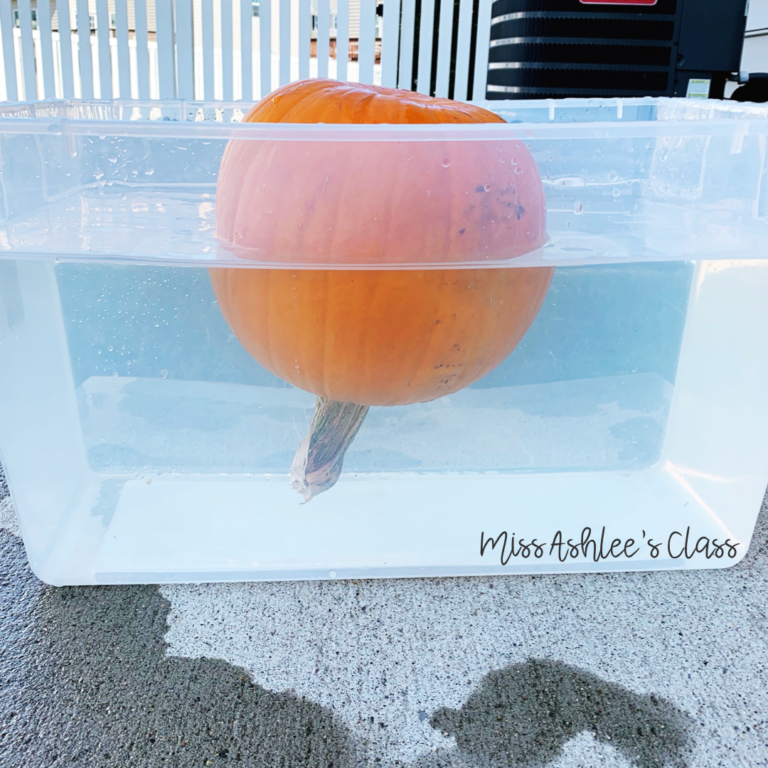
4. Test sinking & floating
Determine if a pumpkin sinks or floats in water by conducting an experiment. Test other elements of the pumpkin separately, such as the stem, seeds, and pulp.
(Difficulty: Easy)
Try it: Pumpkin Experiment
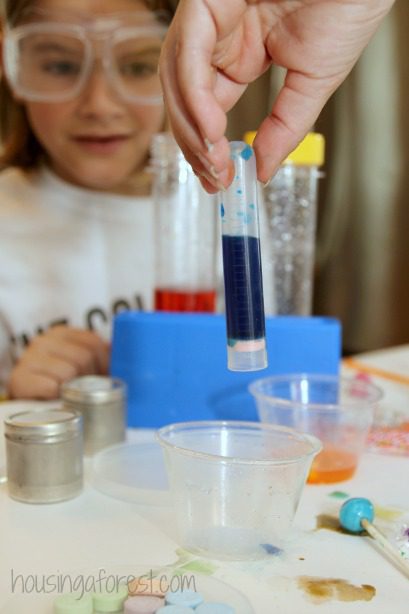
5. Brew up some candy potions
Let your little scientists loose as they play Mad Scientist … mixing, dumping, shaking, pouring, and experimenting to create their own magic potions from Halloween candy.
(Difficulty: Easy)
Try it: Candy Potions

6. Monitor a decomposing pumpkin
Decomposition, or rotting, is the process by which organic substances are broken down after death. Eventually, decomposition breaks organic matter down so that it becomes part of the soil again. And what better tool for this lesson than an old jack-o’-lantern?
(Difficulty: Easy)
Try it: Pumpkin Decomposition Experiment

7. Code robots to create a jack-o’-lantern
Print different pictures of jack-o’-lantern faces individually on cards. Code a moveable robot to collect pieces that will complete the jack-o’-lantern face.
(Difficulty: Medium)
Try it: Jack-o’-Lantern Robot
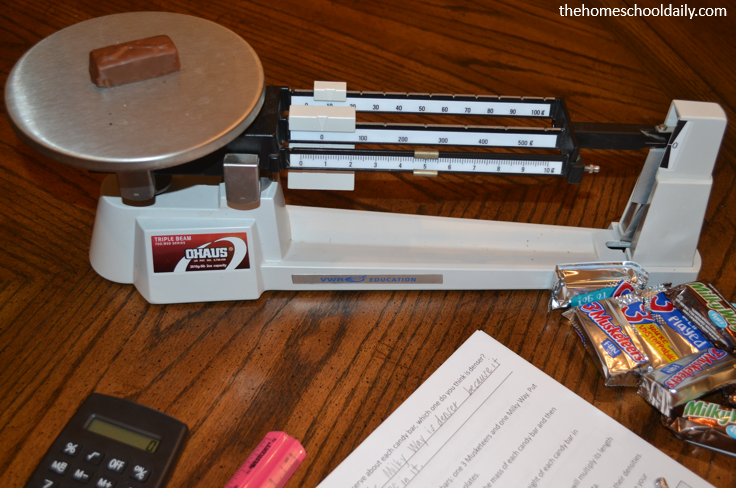
8. Explore the math inside a candy bar
By using the scientific method, determine the density, volume, and mass inside different candy bars.
(Difficulty: Advanced)
Try it: Candy Bar Density Lab

9. Launch a flying Bat
Create a paper tube that fits around a straw and close off one of the ends. Draw or print out a bat template and attach it to the paper tube. Blow through the straw and watch the bat fly!
(Difficulty: Medium)
Try it: Flying Bat Straw Rockets

10. Create an exploding Peeps ghost geyser
Exploding? Say no more! Your students will be enthralled as they watch ghost-shaped Peeps transform when they’re placed in the microwave.
(Difficulty: Easy)
Try it: Exploding Peep Geysers

11. Remove the “M” from M&Ms
Observe how M&M’s have different chemical structures that make the colors dissolve in water, but the letters stay intact.
(Difficulty: Easy)

12. Test candy acidity
A simple experiment to test whether candy has acid in it. All you need are sour Skittles, water, and baking soda. If the candy has acid, the mixture will bubble and fizz when the baking soda is added.
(Difficulty: Medium)
Try it: Candy pH Science Activity
13. Make your own candy vending machine
There are a lot of variations of this project on YouTube from Hack Room, but it’s sure to challenge students’ engineering and planning skills.
(Difficulty: Advanced)


15. Make an oozing monster
Create a monster face on the outside of a plastic water bottle. Mix together glue, borax, baking soda, vinegar, and food coloring and add to the bottle. Watch how the foaming mixture leaks out of the monster’s head.
(Difficulty: Medium)
Try it: Oozing Monster Heads
16. Inflate pumpkin balloons
Using a permanent marker, draw a face on an orange balloon. Fill the balloon with baking soda and attach to a water bottle filled with vinegar. Watch the pumpkin grow bigger!
(Difficulty: Easy)
17. Instigate a fizzy eruption
This experiment is a crowd-pleasing classic! Your students will love creating geysers from Diet Coke and Mentos as they learn about chemical reactions. Definitely an outdoor activity!
(Difficulty: Easy)
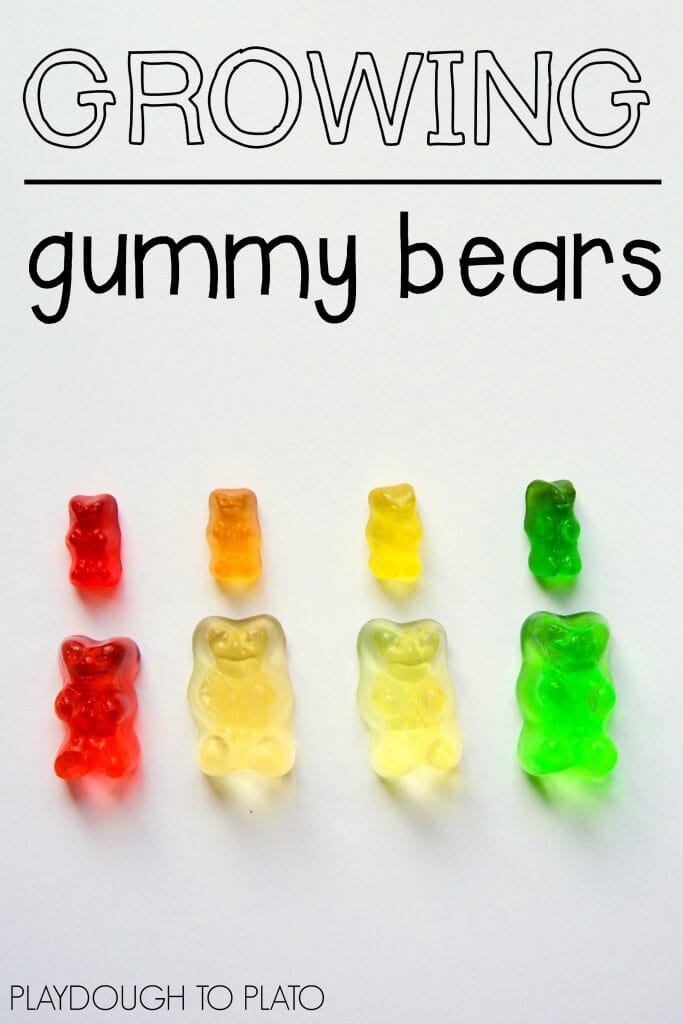
18. Supersize some gummy bears
Little ones will love this Alice in Wonderland–style experiment. Using water, salt, and gummy bears, your students will learn about the process of osmosis.
(Difficulty: Medium)
Try it: Growing Gummy Bear Science
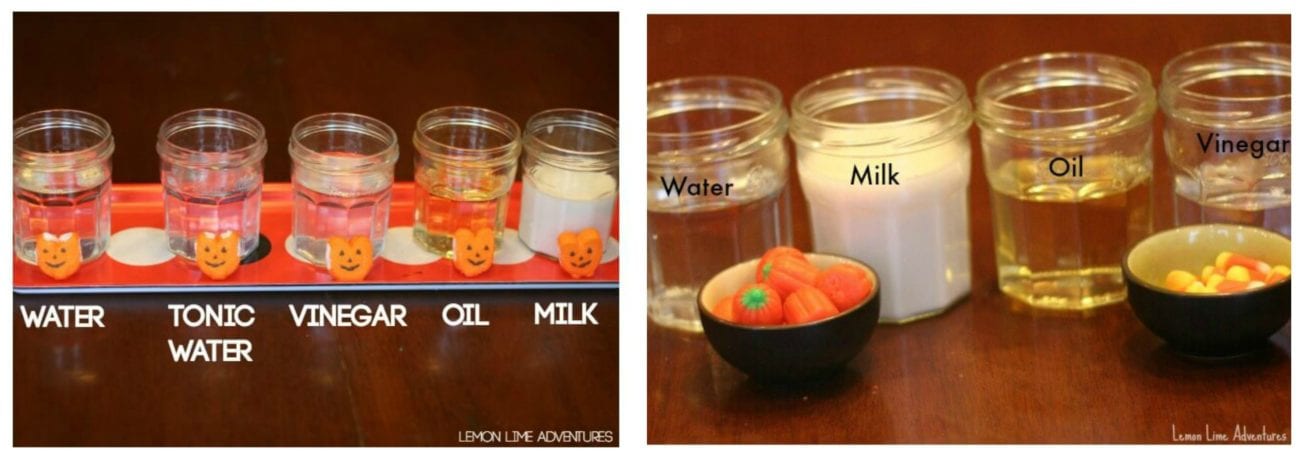
19. Play magician with disappearing candies
What makes these candies dissolve the fastest—and why? Your students will get a taste of the scientific method as they experiment with different liquids and leftover Halloween candy.
(Difficulty: Medium)
Try it: Dissolving Peeps

20. Wanna know what’s really in candy?
Who knew candy had more than just sugar in it? This experiment using Starbursts and heat is eye-opening.
(Difficulty: Medium)
Try it: Candy Oil Test

22. Build a haunted house
Using recycled materials and a simple circuit, build a haunted house that lights up from the inside.
(Difficulty: Medium)
Try it: Spooky Circuits

23. Make a vanishing ghost
Gather packing peanuts and use a permanent marker to draw ghost faces on them. Grab a bowl of water and watch the ghost disappear right before your eyes!
(Difficulty: Easy)
Try it: Amazing Vanishing Ghosts
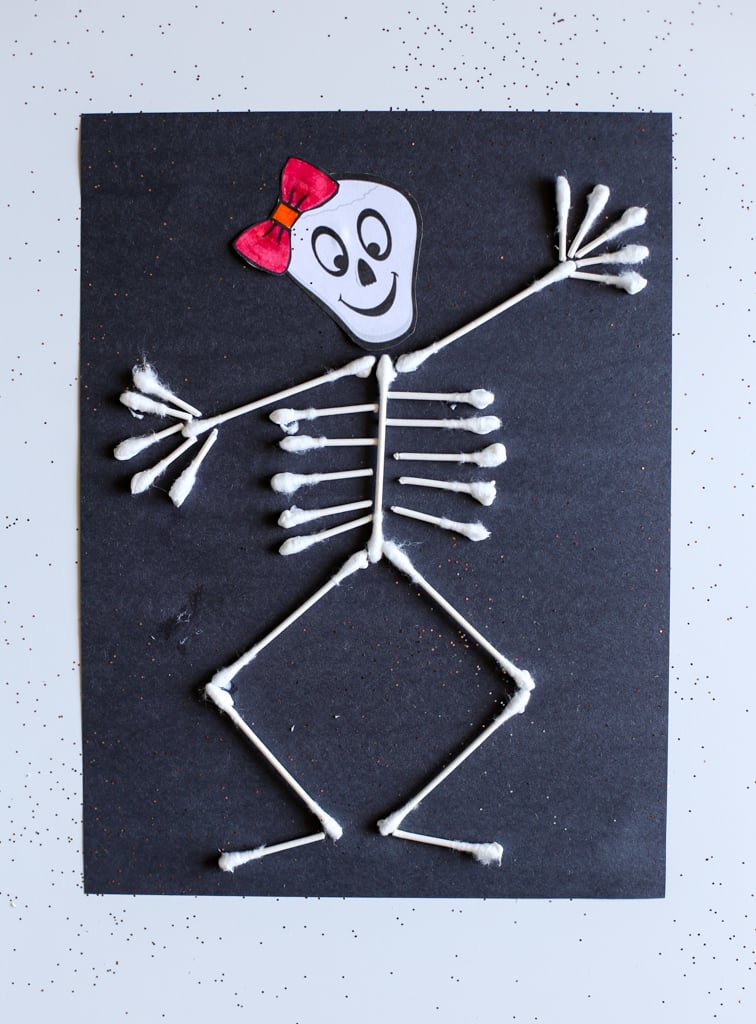
24. Craft a skeleton
Using Q-tips, scissors, and glue, craft a model of a skeleton. Kids can position their skeletons in fun poses!
(Difficulty: Medium)
Try it: Q-Tip Skeleton Halloween Craft
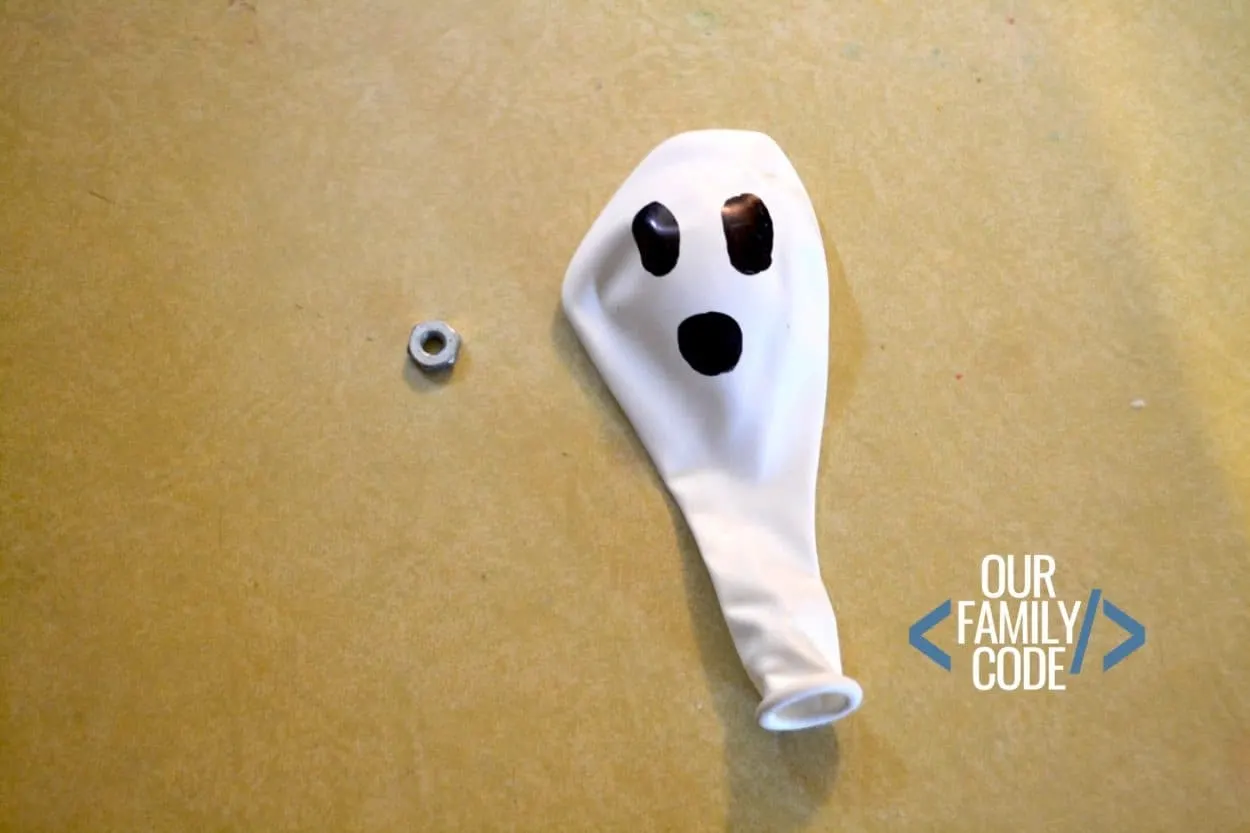
25. Create a ghost sound
On a white balloon, draw a ghost face with a permanent marker. Insert a small metal hex nut before blowing up the balloon and tying it off. When the balloon is swirled around, the hex nut will spin around on the inside, creating a spooky sound.
(Difficulty: Easy)

26. Build an edible haunted house
Who says a haunted house can’t be tasty? Using candy, graham crackers, and frosting, build a haunted house that’s actually delicious!
(Difficulty: Easy)
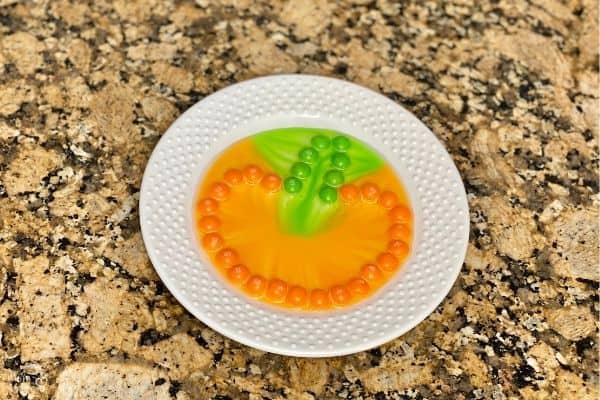
27. Observe a melting pumpkin
Using orange Skittles, create an outline of a pumpkin in a plate. Slowly pour warm water on top and observe the colors melting into the liquid.
(Difficulty: Easy)
Try it: Pumpkin Skittles Experiment

28. Use static electricity to fly ghosts
Cut out tissue paper ghosts and draw faces on them. Rub a balloon on your hair to create static electricity, then float it on top of the ghosts to make them fly!
(Difficulty: Easy)
Try it: Static Electricity Ghosts

29. Light up a pool noodle pumpkin
Carefully cut out a face design in an orange pool noodle. Then, create a play dough circuit that will light up the pumpkin from the inside.
(Difficulty: Advanced)
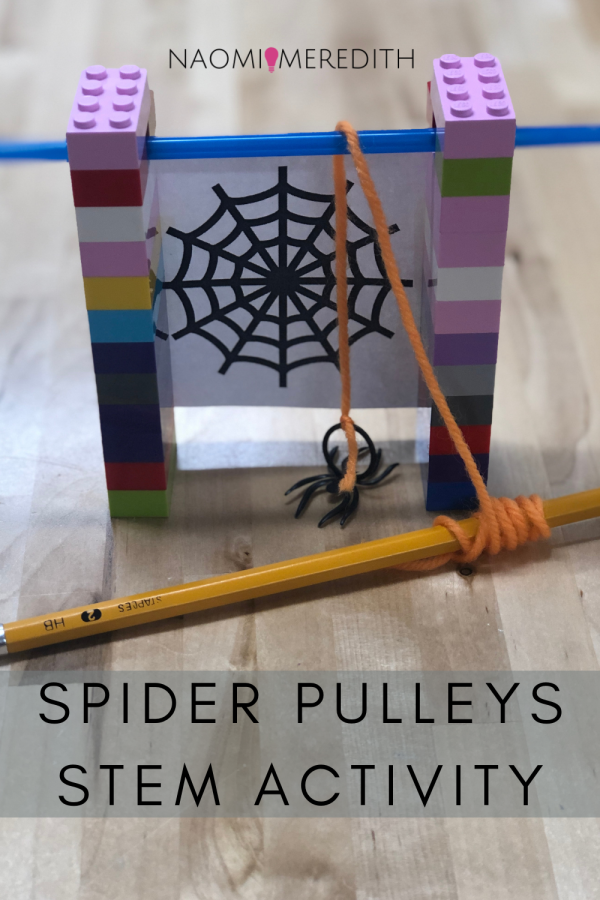
30. Make the spider go up the web
Attach a spider ring to a pencil using yarn. Then, build with LEGO bricks a device that can hold the pencil and have the spider move up the web by rolling the pencil.
(Difficulty: Medium)
Try it: Spider Pulley STEM Activity
For more Halloween fun like these Halloween science experiments, check out our frightfully fun Halloween activities, crafts, and games for the classroom.
Plus, get our free Halloween writing paper plus 20 spooky writing prompts.
Source link





